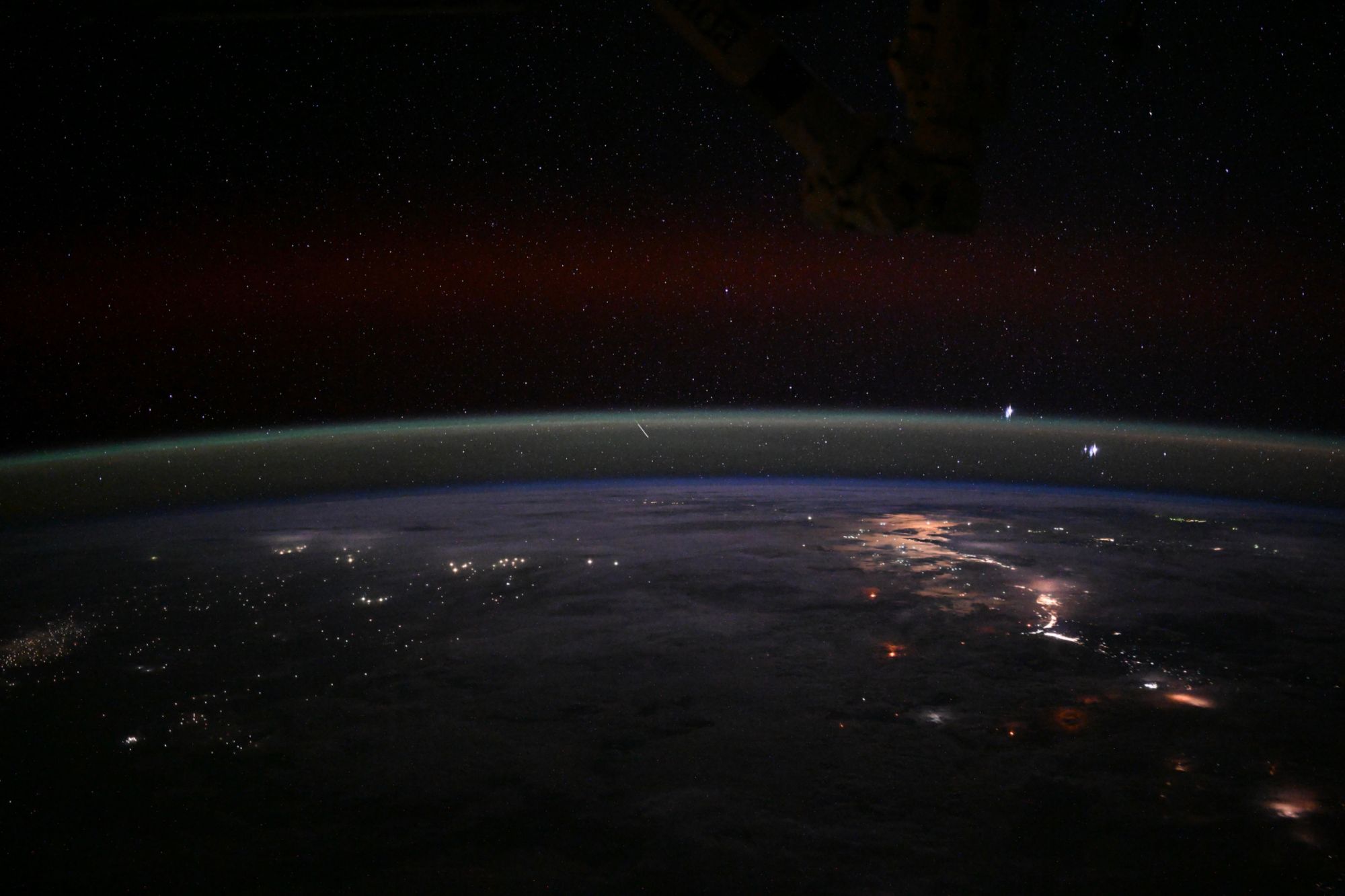Astronaut Kimiya Yui captured from ISS meteoroid.

A meteoroid is a small body in outer space. Meteoroids are distinguished as objects significantly smaller than asteroids, ranging in size from grains to objects up to 1m wide. Objects smaller than meteoroids are classified as micrometeoroids or space dust. Many are fragments from comets or asteroids, whereas others are collision impact debris ejected from bodies such as the Moon or Mars. The visible passage of a meteoroid, comet, or asteroid entering Earth’s atmosphere is called a meteor, and a series of many meteors appearing seconds or minutes apart and appearing to originate from the same fixed point in the sky is called a meteor shower. An estimated 25 million meteoroids, micrometeoroids and other space debris enter Earth’s atmosphere each day, which results in an estimated 15,000 tonnes (16,535 short tons) of that material entering the atmosphere each year. A meteorite is the remains of a meteoroid that has survived the ablation of its surface material during its passage through the atmosphere as a meteor and has impacted the ground.
Reference: Kimiya Yui’s Tweet
See earthview photo gallery: LiVEARTH